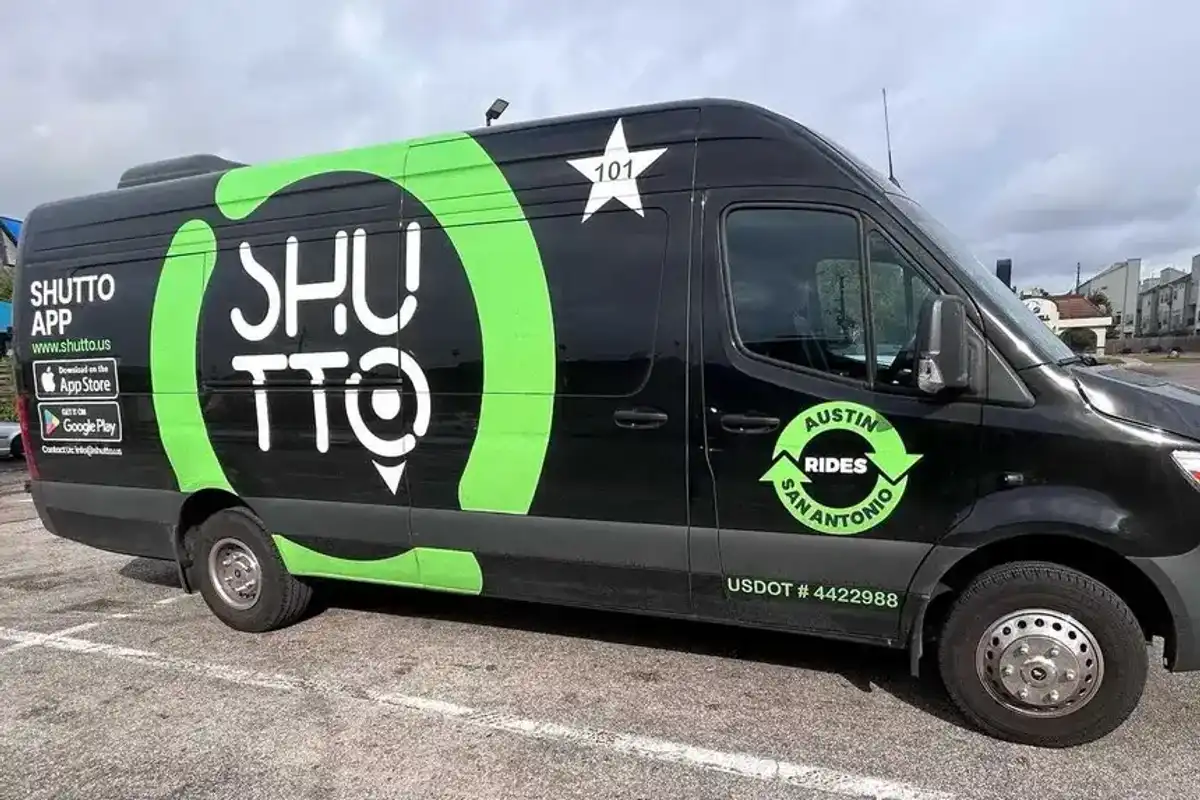How this Houston innovator is providing small businesses unprecedented access to capital
Q&A
Last month, Hello Alice — now with 1 million members in its community — announced a new program with MasterCard that provides small business owners a simpler way to unlock access to capital.
The Hello Alice Small Business Mastercard offers users expert business advice, business insights, cash back, and a rewards program that gives entrepreneurs points for completing business-advancing activities on the Hello Alice platform.
"As a small business owner myself, I've created a card that I wish I would have had," Carolyn Rodz, CEO and founder of Hello Alice, tells InnovationMap. "We really looked at where are the gaps for these business owners and the things they don't already have or are unable to access."
In an interview with InnovationMap, Rodz explains how the partnership came about and how the program will significantly move the needle on equitable access to capital for small business owners.
InnovationMap: How did this partnership come about to provide this this unique credit card for small business owners?
Carolyn Rodz: We have been looking at ways to support business owners along their capital journeys for a long time. Since we started Hello Alice access to capital has been the number one barrier for small business owners, and that's only magnified when we look at business owners of color and our new majority business owners that we focus on. And so it made natural sense as we went down a path of conversations with MasterCard initially around how do we create something, particularly in a world where accessing capital, which would be daunting for business owners.
There's a lot of talk around venture capital and getting loans and what that growth journey looks like. But the reality is most business owners understand a credit card — they understand how it works. So, that was a great starting point for us. Then we looked at what are some of the issues with cards — all business cards particularly or commodities. They're typically an afterthought from a lot of the financial institutions that offer them. We're seeing a lot of these emerging fintech companies that are rolling out cards, but even for them, the small business audience is typically an afterthought. They're really focused on tech companies and very rapid growth businesses.
It felt like mainstream small businesses were really getting lost in this conversation, so that was where we really wanted to tackle. How do we solve some of these problems — how do we create benefits that are actually meaningful to small business owners? Things like one-on-one coaching and helping them get access to workshops that will help them along their growth journey. Things that they can redeem points for experiences and opportunities that that may not otherwise be accessible through a lot of these business owners.
The other piece that we wanted to support is the large group of businesses that don't qualify for a traditional credit card. And so we, in tandem with our unsecured credit card, also launched a secured card. And the idea for that was that we could actually roll out a credit quality tool. So, in conjunction with all the education and wraparound services that we're offering, there's a six- to nine-month process that a business owner — if they have poor credit history — can go through to build up that credit with a secured credit card and then seamlessly transition into an unsecured card. It's an opportunity to take that first step toward building and growing their business and accessing the capital that they need to grow.
IM: How does this initiative target the inequality in access to capital for small business owners?
CR: Well, nine out of 10 of business owners are relying on their personal credit card when they're applying for financing. When we look at entrepreneurs of color, the rate of low credit score for them is two to three times higher for Black and LatinX entrepreneurs specifically. So for us, this is the importance of building in conjunction with our creating equitable access to credit program that is much broader, frankly, than the card itself, but offering the wraparound services around it, making sure that we are providing the secured to unsecured seamless transition plan.
We're also working with the First National Bank of Omaha, and the reason we selected them at the bank, they're the largest privately held bank in the country. This also gave us the flexibility to really look at alternative underwriting models and the the opportunity to learn through all of the insights that we're gaining around these small business owners. We're trying to figure out how do we start to look at some of these alternative data points and identify not just the financial history of a business owner.
There are a lot of circumstances that lead to poor credit scores, whether it was for a health circumstance that they endured or veteran business owners who may have no credit history because they've been overseas for a long period of time. We're looking at what are some of the data points that are indicating that a business owner is more likely to succeed and more likely to repay the credit that they've taken on. We know already through a lot of research and data points that having a business plan automatically makes you more likely to repay your your debt. Or the fact that you are getting positive feedback from mentors is a strong indicator that you're going to be more likely to pay off some of those debts. And so we're really looking at what are some of these things that may be overlooked but are frankly more indicative of who the business owner is and the potential for their for their business and their opportunities to be able to repay credit that they take off.
IM: What type of small business owners do you feel like this is a really good solution for? What all can they expect from the program?
CR: As a small business owner myself, I've created a card that I wish I would have had. When I started this company, I really looked at what was available to the market. This credit card, like many cards, offers benefits that are pretty standard in the market right now. Things like cash back, extra points, and kickers for certain spends that are relevant to small business owners. But again, we really looked at where are the gaps for these business owners and the things they don't already have or are unable to access.
What we discovered was there are lots of accelerators, programs, and workshops and things — but they're expensive. So, there's an opportunity here. We work with our network of partners that we have for Hello Alice that are traditionally paid or have a cost to roll them out and offer business owners points and earnings that can be spent toward that.
Mentorship, as you know, is a huge, huge barrier, particularly when we look at our new majority entrepreneurs, so all of our cardholders get access to one-on-one coaching for this card. And we've really focused on areas that are primary interest to them, things like business strategy, operations, and financing for their businesses.
And then the other important piece of this is leveraging our partner network. We have so many partners that we work with at Hello Alice, companies that are offering products and tools and services to small business owners. With this card, we're opening up additional discounts beyond what we've already negotiated standards for all of our community, whether it's an extra discount on things like QuickBooks, Salesforce, or different tools that they might be using. We have over 70 affiliate partners that we've already brought into the program working with more every week right now, which is really exciting.
We're also trying to find new opportunities — where can we bring the most benefit these business owners in a way that grows with their company and that, as they're spending and creating traction with their company, our team is working behind the scenes to unlock more and more opportunities every stage of that journey.
IM: Do you feel like this program is a response to the growing challenges small businesses have been facing over the past few years?
CR: I mean, our business certainly had a hell of a couple of years, and 89 percent of small business owners in our community, which is now over a million business owners strong, claim the access to capital is limiting their growth potential. Where we focus a majority of our energy as a company is unlocking those barriers.
As we dig into that, what we're seeing is access to capital — whether that's early days as a credit card or a grant funding, or later stage with loans or even venture capital — is that we need to address this by helping to unlock that journey for business owners, but also making sure that we're supporting them with the opportunities that are relevant to their own stage of growth.
The other piece is revenue generation. We always want to focus on the core and sustainable business health of a company and making sure that they're bringing in revenue and that they've created a business model that actually works and is scalable. We're working a lot on providing them not just money into their business or outside capital, but how do we actually help them generate revenue and clear capital in all the stages unless they have that capital? How do we actually help them deploy that capital in meaningful ways will help them grow their business?
All of the wraparound services that come with the core of what Hello Alice offers — and certainly with this credit card we're getting a deeper layer of insight, because we know more about the businesses, we know how they're spending, what they're doing. We're really learning about how do we additionally support this cohort of business owners with the right wraparound services, making sure that they're getting the right thing at the right time.
What's interesting is that and the reason we really started with the credit card is that 50 percent of small business owners have a personal credit score of 680 or better, and that's strong enough to apply for most business credit cards. However, that score locks them out of getting a business loan, which typically requires a score of 720 or better to qualify. So we're able to tap into a cohort and help them grow this pool of capital in the earliest stages. But really making sure that we're giving them the growth tools that ultimately free them up to go get that loan, to go walk into a main street bank and have that power of choice along their capital journey.
In general, we focus a lot on access to capital. We deployed over $37 million in small business grants to date, and we're continuing to grow that pool. We're actually working right now on an equitable access to capital fund, which will allow us to utilize those grants to actually pay the security deposit for select business owners who may not qualify for additional credit.
Ultimately, this is a really tangible way to work with financial institutions, MasterCard, and our broader partner ecosystem. We haven't seen the statistics move in decades. How do we actually open up more capital to business owners that otherwise wouldn't qualify for it? And this is our our first of many steps toward towards putting a really tangible stake in the ground.
IM: What about the challenges of the pandemic — how do you see COVID-19 and its shutdown affect small businesses?
CR: For us, like many businesses, I think the pandemic was it shook everything up. I think we had a plan and a path forward that always entailed unlocking access to capital and unlocking opportunity — that has never changed for us. But it accelerated a lot of things. We had planned to deploy grant funding in 2020 independent of the pandemic. When COVID hit and we saw these businesses struggling, we quickly pivoted. We accelerated that plan significantly. We started deploying grants within weeks of shelter in place — even before PPP had been announced and before businesses were accessing any government support. We were among the first to offer emergency grants and put us in a really strong position to grow that program and again to accelerate the rollout of that, which is now turned into a much larger program.
That really was, I would say, the acceleration of our entire early stage access to capital continuum. And what we learned from that was how much capital these business owners actually need. The process gave us a lot of information that that has really helped roll out the broader continuum of capital for us. We launched our lending marketplace with over 92 small business lenders all focused on fair and equitable funding, which is available over all as well. And so these credit cards round out that early stage access to capital.
But when we look at our new majority cohort — and even many white male businesses — we have to get business owners of all types that are struggling with access to capital. Everybody's willing to give money to business owners that have traction, that are doing well with their business, that are on a growth path. But it's very hard to get the traction that big investors need, and that's always really struggle.
The pandemic accelerated a lot in this space. It made us realize that the opportunity here is actually much greater to support these businesses and also got a lot of attention from partners. We've been having these conversations for years, frankly, prior to the pandemic. And everybody recognized there was an issue, but I don't think they realized the impact of the issue until COVID hit, and small businesses were the ones that kept operating and made sure that we were getting the resources that we needed to continue to live in a time when everything was a little bit uncertain.
------
This conversation has been edited for brevity and clarity.





